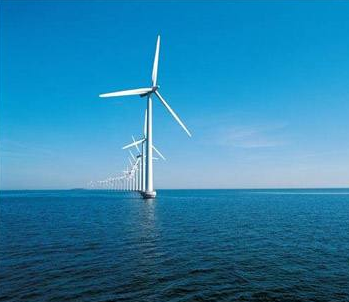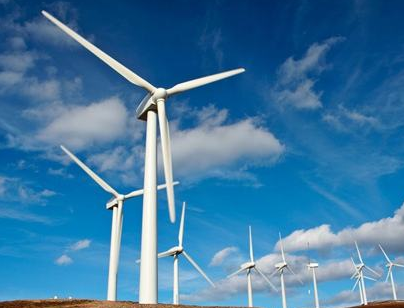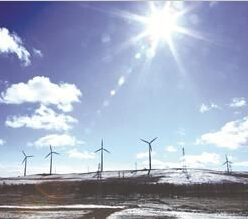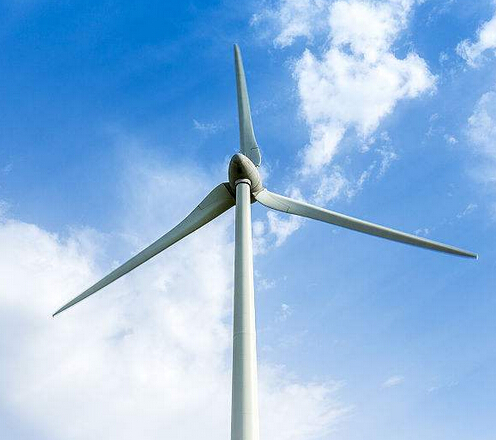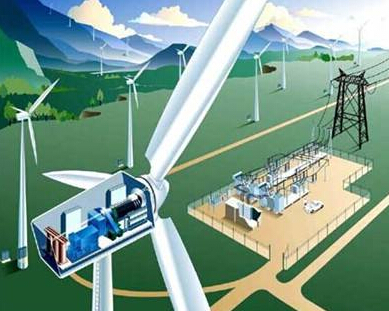According to the latest data from the National Energy Administration, from January to July 2018, the installed capacity of new wind power generation in China was 9.46 million kilowatts, an increase of nearly 23% year-on-year; the average utilization hours of wind power equipment was 1,292 hours, an increase of 174 hours.
In the first half of the year, the national abandonment rate dropped to 8.7%, a drop of 5 percentage points year-on-year, setting a new low in recent years.
The decline in wind curtailment means that the hours of wind power utilization will be greatly improved, and the revenue of the wind power industry will be significantly improved.
Affected by this, in the first half of the year, the performance of major domestic wind power companies has been greatly improved.
Policy risk release
On March 23, 2018, the National Energy Administration issued the "Renewable Energy Power Quota and Assessment Method (Draft for Comment)" (hereinafter referred to as "Draft for Comment"), and proposed that the main body of the quota obligation is: provincial power companies, Local power grid enterprises, other types of distribution power companies (incremental distribution network enterprises with social capital investment), industrial enterprises with self-sufficient power plants, direct-purchasing users participating in power market transactions, etc., do not include power generation enterprises. .
At the same time, the consultation draft proposed to implement the green certificate transaction through the supporting.
Under the influence of power grid companies, the consumer side and the power generation side, since 2017, the phenomenon of wind abandonment and light abandonment has been significantly improved.
According to the public data of the National Energy Administration, in the first half of 2018, the newly added wind power grid-connected capacity of the country was 7.94 million kilowatts. By the end of June, the cumulative wind power grid-connected capacity reached 172 million kilowatts; the national wind power generation capacity was 191.7 billion kilowatt-hours, up 28.7% year-on-year; The average utilization hours was 1,143 hours, an increase of 159 hours year-on-year; the national abandoned wind power was 8.2 billion kWh, a year-on-year decrease of 5.3 billion kWh, and the overall situation of wind curtailment continued to be alleviated.
In the first half of the year, the situation in most areas with severe wind curtailment has improved, with the wind curtailment rate in Jilin, Gansu, Heilongjiang and Shanxi dropping by more than 10 percentage points.
In May, the National Energy Administration issued the Notice on the Relevant Requirements for Wind Power Construction Management in 2018.
The notice is clear that from 2019 onwards, the newly approved centralized onshore wind power projects and offshore wind power projects in all provinces (autonomous regions and municipalities directly under the Central Government) should all allocate and determine the on-grid tariffs through competition; the energy authorities of all provinces (autonomous regions and municipalities directly under the Central Government) will The department shall, in accordance with the “Guidelines for the Competition and Commitment of Wind Power Projects (Trial)” issued by this notice, formulate a competition allocation plan for wind power projects, copy it to the National Energy Administration and publish it to the whole society. According to the “Guidance Opinions”, the new construction will be established in accordance with the “Guidance Opinions”. Scale organizes the competition allocation of wind power projects in the region.
In addition, the National Energy Administration said that due to the subsidy pressure, the national energy management department will adjust the allocation of wind power resources, test the allocation of wind power resources, accelerate the price level of the wind, and improve the competitiveness of the industry.
This is an important change in wind power resource management in the past 20 years and will have an important impact on the wind power industry chain.
With the clarification of policies such as “quota + green certificate” and competition allocation resources, the risk at the policy level has been lifted; in the past two months, the wind power sector has been significantly retraced by the new energy industry policy, and the current policy supports the direction of wind power. Once again, the subsidies for the stock wind power stations are not affected, and the improvement of the wind curtailment is still going on; in the short term, the wind power industry will enter the peak season of installed capacity in the second half of the year, the economic benefits of wind power projects are good, and the industry is in a high boom period; from 3-5 years In terms of dimensions, wind power entered the third growth cycle. With the return of wind power development to the “Three North” region, the wind power industry has the basis for maintaining high growth.
Strong downstream demand

According to the National Energy Administration, from January to June 2018, the newly added wind power grid-connected capacity of the country was 7.94 million kilowatts, a year-on-year increase of 32%; in June, a new grid was added to the grid of 1.64GW, an increase of more than 200%; July single month Wind power grid-connected to 1.93GW, a month-on-month increase of 49%, wind power installed capacity gradually improved; new installed capacity in the first half of the year concentrated in Inner Mongolia, Jiangsu, Qinghai, Henan, Shanxi, Ningxia, especially in Inner Mongolia, new grid-connected installed capacity of more than 1GW .
Looking at the new grid connection situation across the country, the new grid connection exceeded expectations in the first half of the year. At this time, domestic wind power development is in the traditional off-season, and the price of wind turbines is still in the downward trajectory.
In the first quarter of 2018, the average price of 2.0MW wind turbines fell to 3,434 yuan / kW, compared with the average price of 9.89% at the end of 2017.
At the end of June 2018, the average bid price of the 2.0MW model was around 3,300 yuan / kW. In the first half of 2017 to 2018, the bidding price of 2.0MW wind turbines dropped by 890 yuan/kW.
In the third quarter of 2018, equipment shipments, hoisting capacity, and grid-connected capacity are expected to increase significantly.
According to the January-July wind power installed data released by the National Energy Administration, the installed capacity in July was 1.93 GW, a year-on-year increase of 49%.
According to the statistics of the national power industry from January to July, the newly added wind power generation capacity from January to July was 9.46 GW, an increase of 2.16 GW over the same period of the previous year.
In 2017, the market share of new installed capacity has reached 29%; energy-saving wind power (601016.SH) installed capacity of 2.33GW in 2017, and installed grid-connected 693.5MW in Hebei, and cumulative grid-connected in Xinjiang reached 600MW. Net 748.5MW.
Industry reshuffle continues
The decline in wind turbine prices is continually squeezing the profits of the wind turbine manufacturing sector.
According to the semi-annual report, energy-saving wind power achieved revenue of 1.213 billion yuan in the first half of the year, up 30.56% year-on-year; realized net profit of 338 million yuan, a year-on-year increase of 47.11%. In the first half of the year, the company completed a total of 3 billion kWh of on-grid electricity, an increase of 727 million kWh over the same period, an increase of 31.91%.
For the substantial improvement in performance, the explanation given by the energy-saving wind power is that the operation of the newly-invested project in the first half of the year and the situation of the wind curtailment in some areas of the company increased compared with the increase in electricity sales and sales revenue from the improvement of the same period last year.
According to the announcement, the company achieved revenue of 17.786 billion yuan in the first half of the year, an increase of 27.38% year-on-year; realized a net profit of 1.571 billion yuan, a year-on-year increase of 21.74%. In the first half of the year, SDIC Power completed a total of 65.152 billion kWh of electricity generation, with an online power of 63.121 billion kWh, an increase of 19.52% and 19.13% over the same period of the previous year. Among them, the wind power generation capacity was 1.027 billion kWh, an increase of 44.74% over the same period of last year; in the first half of the year, the wind power on-grid electricity was 1 billion kWh, an increase of 44.73%.
SDIC reported in the “Main Business Data Announcement for the Second Quarter of 2018” that the main reasons for the overall year-on-year growth of wind power generation are as follows: First, the wind power curtailment situation in the northwest region has improved, and the power generation has increased more than the same period of the previous year. Second, Dongchuan The Yandun, Jingxia and Qinghai wind power projects were put into operation one after another and began to exert their effectiveness.
The semi-annual report shows that the company achieved operating income of 793 million yuan in the first half of 2018, an increase of 12.93% over the same period of the previous year; net profit of 11.7 million yuan was realized, a year-on-year increase of 13.64%. During the reporting period, the company's wind power industry achieved a total revenue of 358 million yuan, a decrease of 4.45% from the same period of the previous year.
Under the influence of factors such as bid allocation resources and affordable Internet access, there is still downward pressure on wind turbine prices.
Small equipment manufacturers can't participate in bidding, leading companies need to go against the trend to increase market share, and industry reshuffle continues.
















 RCCN WeChat QrCode
RCCN WeChat QrCode Mobile WebSite
Mobile WebSite